How Do You Know When Fennel Is Ready to Be Picked
How will I know when my child is set up to read? What are the reading readiness signs and skills that show my child is set to read? You may have wondered these questions a time or two before. Today, we're going to explore a few readiness signs and I take a gratis, printable checklist {at the stop of the post} that y'all tin can use to appraise to see if your child, or pupil, is gear up to read!
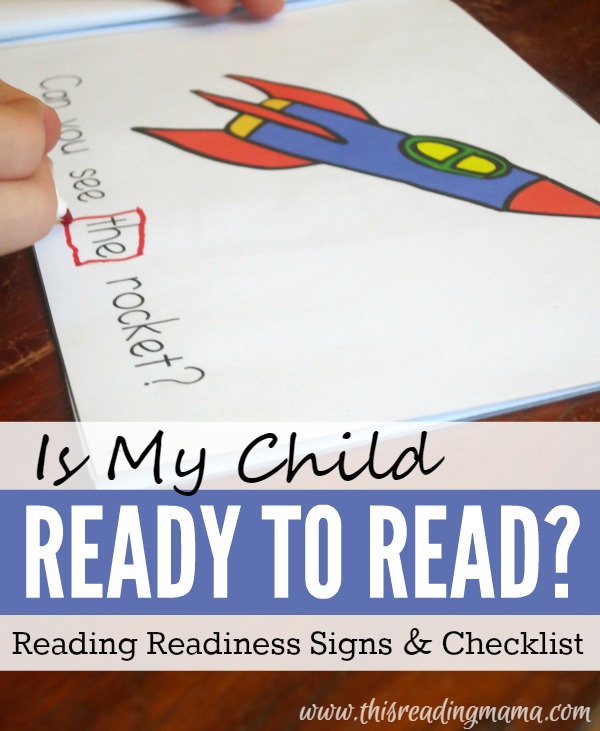
*This mail contains chapter links.
Signs that a Child is Ready to Read
The pressure to have kids reading at an early age is sometimes so unbearable that parents and teachers alike push kids before they are developmentally ready to read. And as these kids get older, we wonder why they are struggling to read to keep upwardly!
I believe with every teaching fiber in me that we need to follow the atomic number 82 of our kids, especially when they are young. Our kids volition permit u.s. know when they are ready to read AND there are things we can teach them to help prepare them along the way.While I'm list these 5 reading readiness signs separately, they really do all work together to help beginning readers. Allow's explore together. {You can notice more resources for reading readiness at The Measured Mom.}
1. Your Kid is Interested
For me, interest is KEY. So much so, that I put is as #1. If your child isn't gear up, he volition let you know! Merely, I would besides encourage you not to surrender. Keep reading with your child, purchase toys that feature the alphabet or math concepts, make information technology as meaningful as possible, or make a large bargain virtually your child's name {especially that outset letter}.
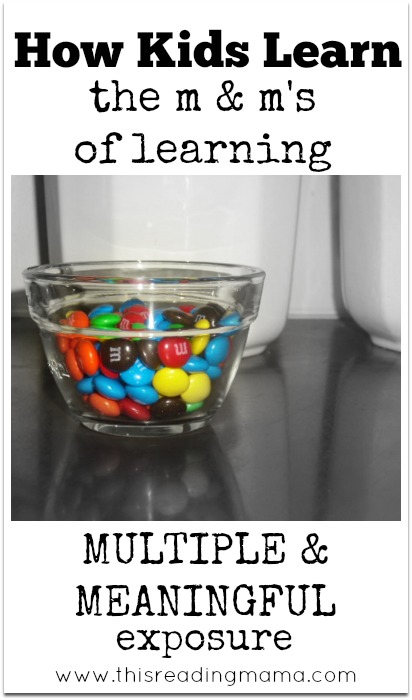
If your child is fighting you, don't make learning a question and answer session, where y'all "grill" your child, "What'southward that letter?" or "What rhymes with bat?" Live information technology. Show it. Read information technology. Integrate literacy into your every solar day. Sneak it in whenever possible.
And whatever you do, don't compare your reluctant learner to a sibling or another child. Oh, such a trap this is! Every child is different. That'south the dazzler {and sometimes frustration} of it.
ii. Your Kid Can Remember & Retell Unproblematic Stories
Exercise you lot ever grab your child "reading" a story you've read to him? Does your child respond uncomplicated questions about stories as you lot read her? This is an important skill needed for reading, too.
Quality literature is vitally important. While we practise have the occasional TV graphic symbol book, this is not what fills our shelves. We have several quality book lists: Our Favorite Books {5-24-hour interval serial}, Letter of the alphabet of the Calendar week Book Lists, and Rhyming Books for Kids.
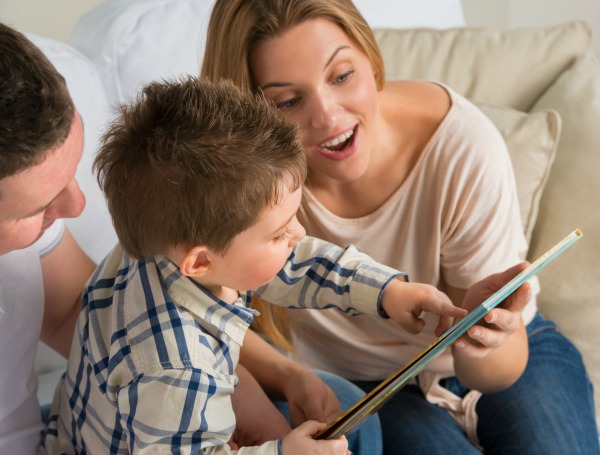
Reading WITH your child, non just TO you kid is another signal I want to mention. And in that location is such a subtle deviation. When you lot read with your child, your child is in your lap or right beside you, giving your kid the opportunity to run across and interact with the pictures and the story. Reading to a child normally means the child takes a less active roll in the story.
While there is a identify for both, reading with younger kids has the better potential of developing a dearest for reading and understanding of how books work {meet number 3.} Y'all'll find lots of tips for reading with your child on my collaborative Read Aloud Resources Pinterest Board.
3. Book & Print Awareness
Book awareness is something that most kids pick up naturally equally you read with them. How do you lot concur a volume? Where is the front of the book? Where is the back of the book?
Print awareness, while it can be "caught", requires a little more than explicit teaching considering there is a wider range of vocabulary from uncomplicated vocabulary similar words to much harder concepts likequotation marks. Please hear me say that kids do not demand to know everything there is to know about impress earlier they are set to read either.
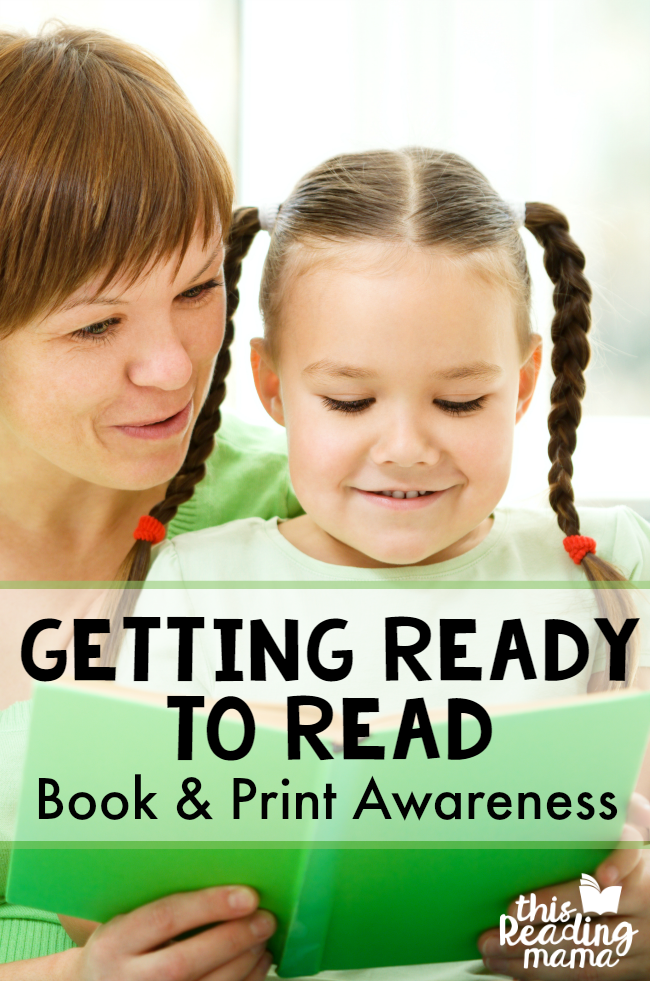
Included in the checklist {at the finish of this mail} are some simple things well-nigh print that kids need to be taught, like "These are the words and this is the picture." or "This is the commencement letter in the word." Yous can read even more about book and impress sensation here and find ideas from A to Z hither.
four. Your Child Can Play with Sounds in Words
What exactly practice I mean by this? While nosotros take a 7-day series on this topic that goes into more depth, the "cliff notes" version is that kids tin can play word games without any written letters or words. The games can exist played ANYWHERE {and I highly recommend playing them anywhere, too!} The three biggest helps earlier reading are 1- playing with rhymes, 2- playing with syllables and 3- playing with sounds in words.
Rhyming Fun
Teaching rhyming is so much fun! Y'all can do this through rhyming books {meet our book lists for kids Hither and HERE.} Yous can fifty-fifty do this on the swing outside: "I tin can rhyme with bat…cat." My accented favorite fashion to teach rhymes is through songs.
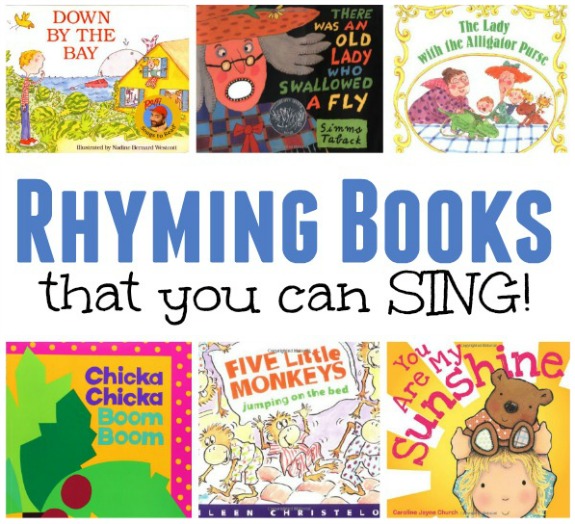
Some of our favorite artists over the years take been Raffi, Greg & Steve, Hap Palmer, Dr. Jean, and Super Elementary Songs. Listening to and singing these songs prepares readers to rhyme and understand the foundation of how words work. I've yet to teach a child {including my ain} who turned his nose up at these fun songs!
Learning about Syllables
For pre-readers, the ability to count syllables in words is enough, although I have included blending syllables on the printable checklist besides. Clapping, stomping or jumping to syllables in words is a great way to get kids actively involved.
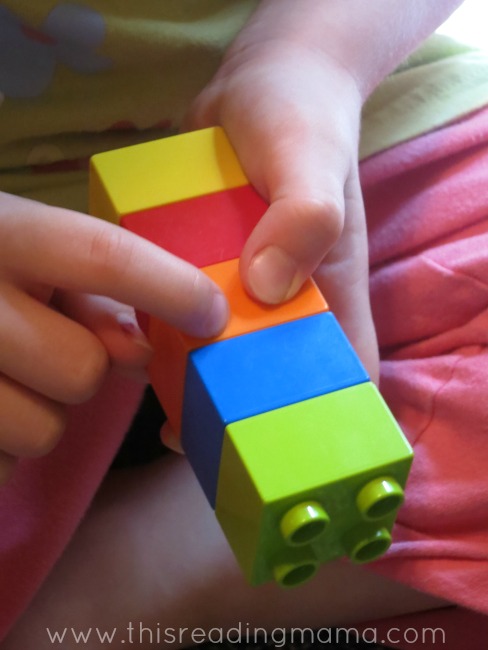
I also like to accept a physical manner for kids to count them, like we did in our DUPLO block syllable counting activeness. This style, syllables go concrete every bit they tin physically count them as they say the word. Yous tin can find more syllable counting ideas in each lesson of Reading the Alphabet,in our seasonal Pre-K/K Packs, or these awesome syllable prune cards from The Measured Mom.
Learning Nearly Individual Sounds in Words
In society to read, kids need to understand how alphabetic character sounds grade words {sometimes called "sounding out words".} But before I focus on reading uncomplicated words in print, I similar to play sound games with alphabet moving-picture show cards to assist them take those individual sounds and make words. You lot can observe TONS of audio games, like our Letter Sounds Tic-Tac-Toe game, on our ABC Goodies Pinterest board.

Beginning consonant sounds are easiest for kids to hear, so I start at that place {meet more than about this in #5 below.} After beginning sounds, come the ending sounds. Then, center vowel sounds.

Once kids are hearing the beginning, ending and vowel sounds, I play a elementary listening games, peculiarly ones to help kids blend sounds together to class words. For instance, "I'm going to say a word very slowly. Can you lot figure out which give-and-take I'k saying? /b/-/due east/-/d/." {Notice that I'm saying letter sounds with a pause in between.} The child is to take those sounds, alloy them together faster, and then realize the word is bed.
You can read well-nigh and encounter more listening games in activeness like this one over at Imagination Soup or in our mail on Phoneme Blending.
v. Your Child Knows MOST of His Messages and Sounds
You lot might be surprised that I didn't say all messages and sounds. Some messages are trickier and less frequent than others, such as q, 10, or z. And while we desire our kids to somewhen go those letters, kids can actually start reading before they are completely mastered.
I also believe that kids need to know letter names {upper and lowercase} AND their letter of the alphabet sounds. Not either/or, only BOTH. You can read more than well-nigh why here.
Once again, kickoff consonant sounds are the best place to outset when education letter sounds within words. Why? Because developmentally speaking, these are the easiest for kids to "hear" in a word. One of the offset strategies kids learn when figuring out unknown words is to use the first letter of the alphabet to help them offset to say the word.
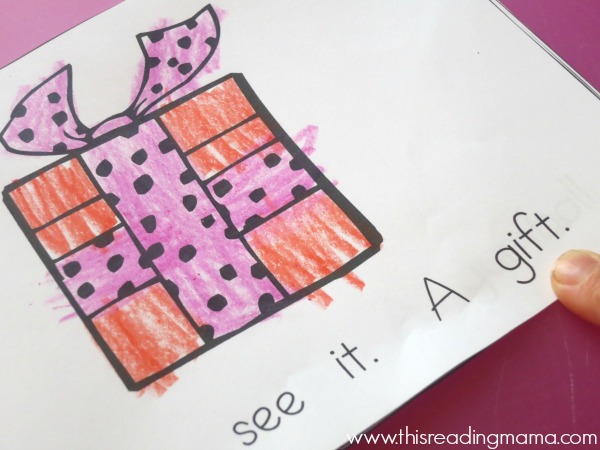
For example, when reading "My Alphabetic character Gg Book" from Reading the Alphabet , my iv yr quondam read present instead of souvenir {even though we went over the vocabulary before reading it.} Afterwards all, it does wait like a nowadays, right? This is about how our conversation went that day.
Me: "Let's expect at this word right here." {pointing to souvenir.} "What letter would have to be at the front of this word for information technology to be nowadays?"
MBug: "Umm…p-p-nowadays. A p."
Me: "Yeah, you're right. Only look at the give-and-take again. Does it have a p at the forepart?"
MBug: "No."
Me: "And then, it tin't be present because we'd see a p at the beginning of that give-and-take. Information technology must be another give-and-take that means the same matter as present, merely it starts with a /g/ sound instead. How about gift?"
MBug: "Yes, souvenir!"
Me: "So assist me remember. What inkling did the word give me to help me know that it is gift and non present?" {Checking to encounter if she tin can put it in her own words.}
MBug: "The commencement letter…the audio it makes."
Me: "Aye, the start letter in a discussion can sometimes requite you a Big inkling and help you know what the word says {or doesn't say.}"
Reading Readiness Checklist
Anytime I hear the word checklist, I automatically think, "non-flexible." Then, before I share our printable Reading Readiness Checklist, I want to remind you that all kids are unlike. This checklist was developed to help you see the strengths and weaknesses of your child in regards to the v readiness skills we talked about above. It can be given as a "sit down" kind of test, although I would Non suggest doing it all at once; or you tin can simply use the ideas every bit a springboard for integrating them into you 24-hour interval.
And, as always, Y'all are the adept on your own child. I might know how to tell if a child is ready to read, but y'all know your child improve than me. Use your own judgment when making that call.
Follow This Reading Mama'south lath Pre-Reading Skills: Rhyming & Phonological Sensation on Pinterest.
Follow This Reading Mama'southward lath Reading the Alphabet on Pinterest.
Follow This Reading Mama'due south board ABC Goodies on Pinterest.
Follow This Reading Mama's board Alphabet Activities for Preschoolers on Pinterest.
More than Resources You May Enjoy
- Book and Print Sensation – Getting Ready to Read
- Learning the Alphabet – hands-on printables for learning messages and their sounds
- 3 Skills Kids Need for Reading {a 7-day series}
- Assess Letters and Letter Sounds with a Puzzle
- Tips for Teaching Messages and their Sounds
- Teaching the Alphabet to Reluctant Learners
- 5 Things Your Child Needs to Know Before He'due south Ready to Audio information technology Out {The Measured Mom}
- Reading Readiness Checklist {All About Learning Press}
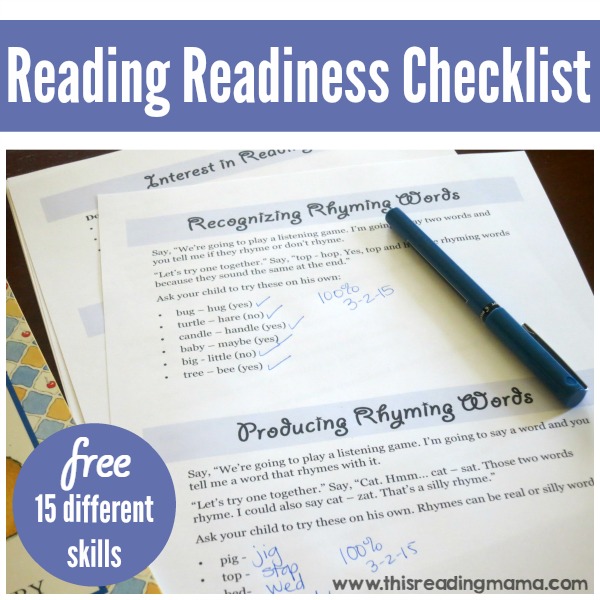
>Download our FREE Reading Readiness Checklist.<
~Becky
Source: https://thisreadingmama.com/ready-to-read-reading-readiness/
Belum ada Komentar untuk "How Do You Know When Fennel Is Ready to Be Picked"
Posting Komentar